Landscaping Tricks to Manage Stormwater Runoff
If you’ve ever lived at the bottom of a hill during an extreme weather event, then you know intimately about stormwater runoff. I have distinct memories of watching my bunny rabbit’s cage float down to the bottom corner of the garden during major downpours, at the Dallas house I grew up in. Many family rescue teams had to be sent out to retrieve my furry friends.
Part of this was surely due to the fact that the Texas summers would dry out the land, and the big rains would be too much for the land to absorb so quickly. The result was a huge torrent of water gushing down the hill. However, it certainly didn’t help that all of our neighbors (ourselves included until we knew better) had huge, paved decks, effectively sealing off the majority of the earth that could otherwise absorb some of that water.
Last week I talked a bit about how a green roof is one way to help manage stormwater runoff. Another simple and straightforward way is to make sure that the landscape of your garden is permeable, including your hardscaping, paths, decks and driveways. I am by no means a landscaping expert, but in designing homes I often need to specify pavements as well. The following are a few applications where porous paving could be a good call.

Driveways
No one wants an asphalt airstrip in front of the house, but we sometimes assume that dense paving is necessary to take the load of a carport or driveway. This isn’t always true. Many people park on plain, unsupported grass, or turf that has been reinforced with flexible grass pavement or an open-celled paving grid.
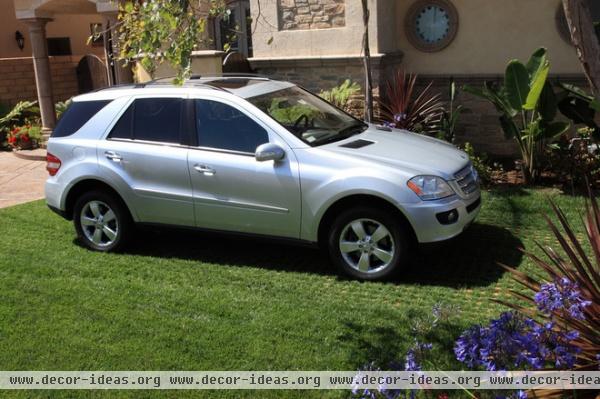
Remember, though, that not all turf is created equal. In this photo the lawn is only as big as the parking area. One of the reasons that large expanses of turf, sod or lawn are hardly visible in sustainable landscaping plans is that the shallow root systems of many kinds of grasses make them high-maintenance water guzzlers in the summer. The roots mesh together with the compacted earth to form a fairly tightly knit sod, decreasing the rate of water infiltration compared to other kinds of landscaping.
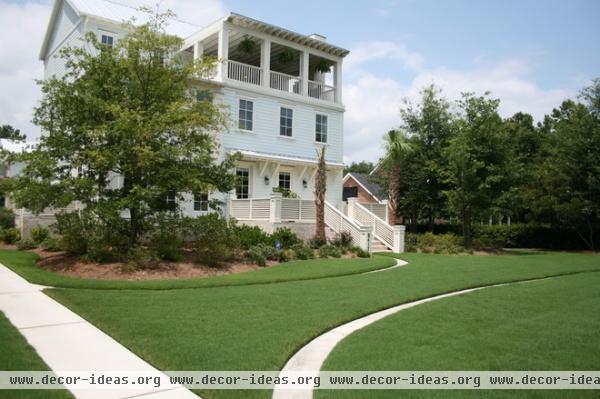
For added support, flexible plastic grass pavements are grids that virtually disappear under the turf but keep your driveway sturdy enough to handle the traffic of your daily life. (Note: These usually require that you stay at low speeds. On the plus side, they can last longer than many other solutions.)
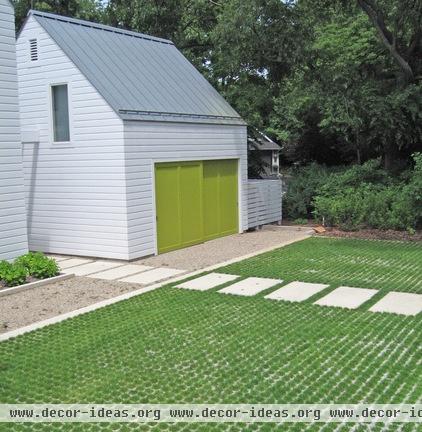
Open-celled paving grids like this one can be a sturdy way to introduce grass into a driveway, although they can sometimes cause trouble in colder climates (depending on the material).
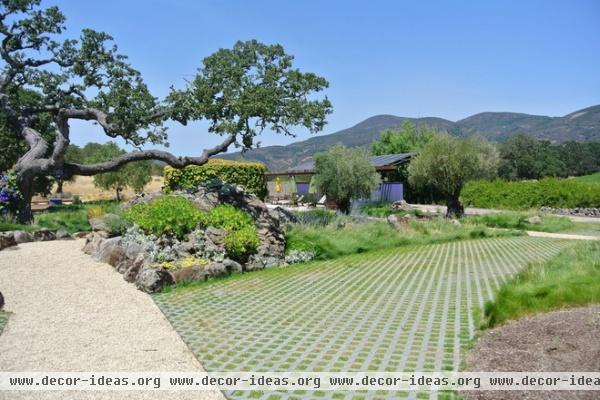
The advantage of grids is that they prevent the soil and shallow grass roots from forming that compact and impermeable layer, making it a little easier for stormwater to make its way down into the ground.
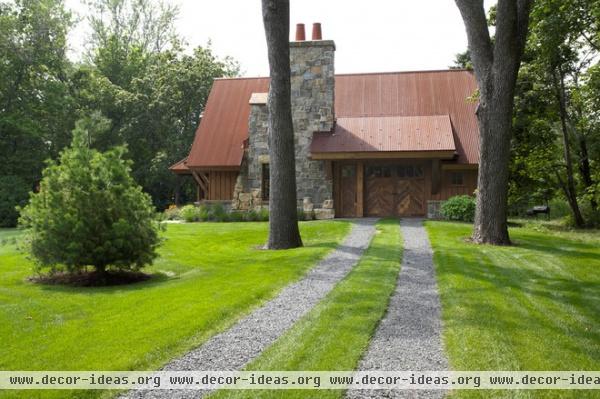
Not to be forgotten, porous gravel paving systems can accommodate heavy loads and traffic. They are low maintenance and do a great job of keeping the gravel from moving around and piling up where your tires turn.
They are even stable enough to meet Americans with Disabilities Act standards, and are often used in universal design applications.
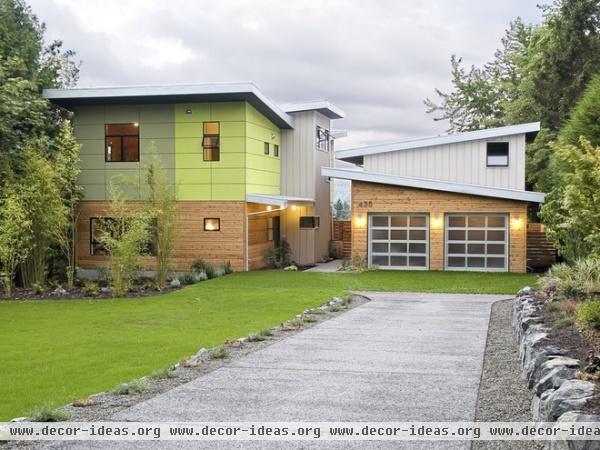
There are even pervious asphalt and concrete options that can replace traditional materials on high-traffic driveways or entry roads. Basically, the structure of these materials is similar to that of conventional concrete but with wider pores.
I’ve heard conflicting conclusions about cost estimates of porous asphalt, as compared to conventional asphalt. It seems that even though the initial cost of materials is higher, some people believe that the porous system ends up being cheaper over the life span of the driveway or road. Bear in mind that a proper conventional asphalt road or driveway should incorporate a stormwater collection and treatment system, which would affect the overall cost.
Porous asphalt is now being used across Europe in highways because of the reduced risk of accidents from standing water or ice. From what I understand, research is still being done on the performance of porous concrete in cold weather.
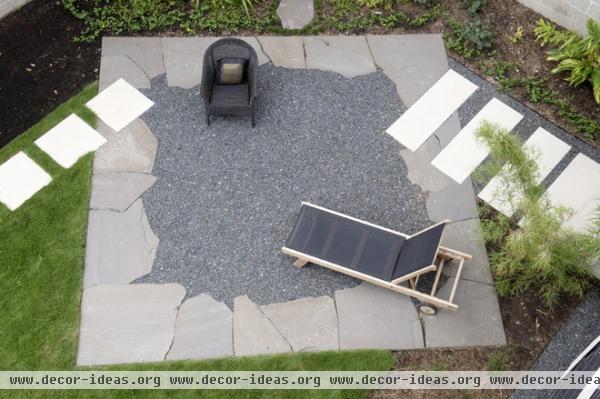
Patios and Decks
Pavements can take up twice as much area as our houses and are a main culprit in all kinds of environmental problems, including polluted runoff, depleted groundwater, high temperatures, unnecessary erosion and stunted tree growth.
This beautiful patio has just enough stone to provide a clean, modern edge, but a percentage of it is permeable because the center is filled with gravel.

This house has an alternating pattern of stone and grass for an outdoor surface that is 50 percent permeable to allow infiltration of water.
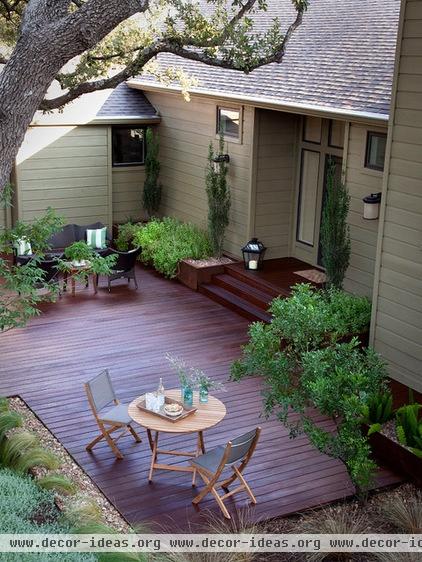
A good old-fashioned wooden deck is a classic and beautiful example of a pervious surface that can also handle pedestrian traffic, making your garden more livable.

In this example the owners have probably saved quite a bit of money over the life span of this deck. Instead of using wooden planks that would need to be refinished and eventually replaced, they’ve used wood to frame a low-maintenance and relatively porous gravel deck.
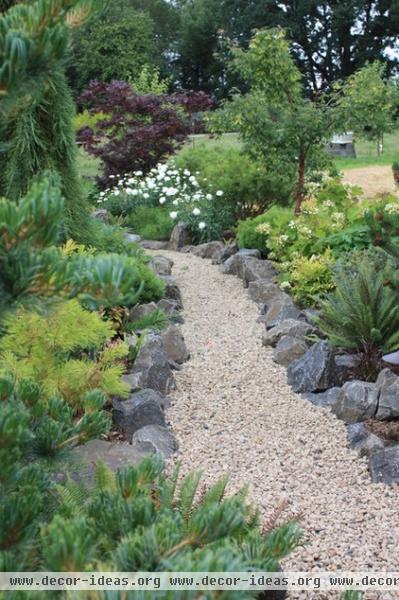
Paths and Steps
Remember that even with a classic gravel path, properly installing the subgrade, the base course and the surface layer can give you a much more durable result. Instead of just throwing some gravel down in your garden, consult a landscaper to get some good recommendations on plastic grids and fabric backings that discourage weed growth.
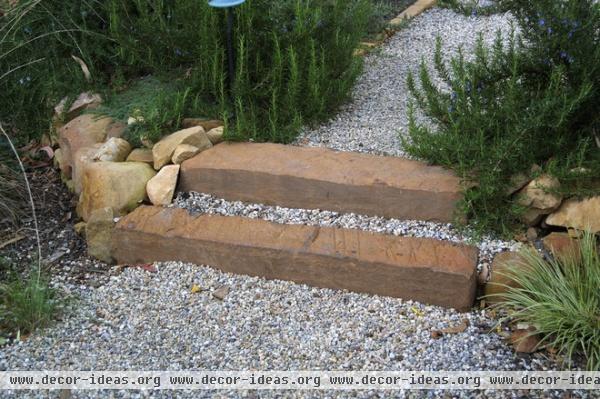
A change in grade can often be tricky, so you may want to use the steps as a location for some feature stones while maintaining the gravel look as contrast.
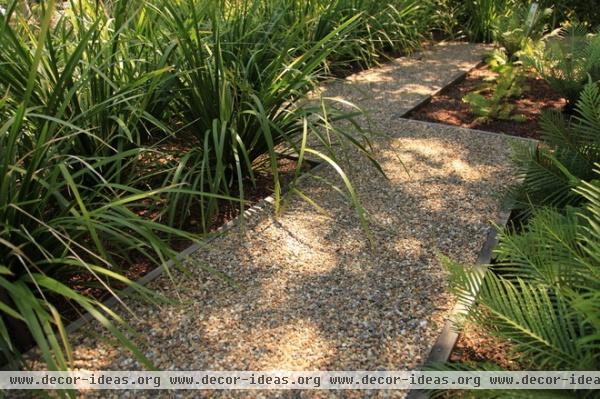
In a similar way, you could use wood or masonry frames to give a cleaner edge to your gravel path.

Mulch can make for a simple and attractive path if you’d like something softer under your feet. It’s extremely porous and performs surprisingly well, even after quite a bit of traffic. It’s also inexpensive and easy to maintain on your own.

Back in my mom’s yard in Dallas, she has revamped the whole backyard on a very tight budget to create more opportunities for stormwater to infiltrate the ground.
Notice the small area of the garden that resembles a Texas riverbed. It basically is a deeper section of the garden filled with river rock and pebbles, where the stormwater can gather before slowly being absorbed back into the ground. My mom then added a stone path with gravel joints to balance accessibility and permeability.
No more worrying about floating pets!












